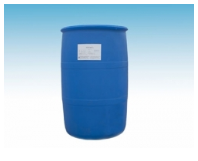Silicon containing surfactant is a new type of surfactant developed with the development of new silicone materials. It not only has the characteristics of high temperature resistance, weather aging resistance, non-toxic, non corrosive and high physiological inertia, but also has excellent performance of reducing surface tension. It is a special surfactant next to fluorine-containing surfactant. In the textile industry, silicon-containing surfactants give textiles soft, smooth feel, anti-bacterial, anti-static, hydrophilic, waterproof and other special functions.

At least one hydroxyphenyl substituted Polydimethylsilane mixed with the same amount of phenol can be used as the lubricant of textile fiber; the silicon finishing agent containing epoxy group can give the fabric a good handle, inhibit yellowing and improve the water absorption of the fabric; the surface active agent containing ammonium group has a strong bactericidal ability, which is physiological inert to the human body, does not stimulate the skin, and the finished fabric has a good handle.
In addition, the silicon surfactant neodol 23-3, Silwet-L77 and silicone oil compound emulsion can be used for wrinkle resistant treatment of fabrics; polysiloxane surfactants can be used as defoamer or foam stabilizer in different temperature ranges, and have important application value. Polyester / polyester / cotton / polyester / wool fabrics are dyed with polysiloxane and alkyl polyglycoside 0.5:1.0 ~10:1.0 emulsion. After finishing, the washing fastness was further improved on the basis of keeping the original softness.
The ionic surfactant is absorbed to the surface to generate an electric charge. Cationic surfactants will lead to a positive charge on the surface, while anionic surfactants will lead to a negative charge on the surface.
Nonionic surfactant molecules do not have charge in the water medium, but generally contain highly polar components, such as polyoxyethylene group. Amphoteric surfactants may be negatively or positively charged depending on the pH of the solution.
At low concentrations, surfactant molecules are nonassociated monomers. With the increase of surfactant concentration, the attraction and repulsion between molecules will form self-assembly phenomenon, which will lead to the formation of monolayer structure or micelle. The concentration at which the micelles are formed is called the critical micelle concentration (CMC). The properties of micelles can be controlled by the slight change of the molecular chemical structure of surfactants or by the change of the conditions of the dispersed phase. It is well known that the change of pH, ionic strength and temperature can affect the particle size and shape of surfactant micelles. In some cases, the size of micelles may be affected by the concentration of alkyl glycosides.